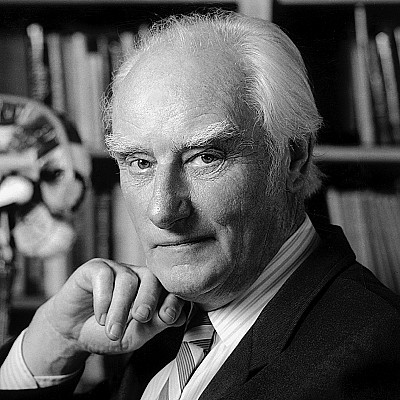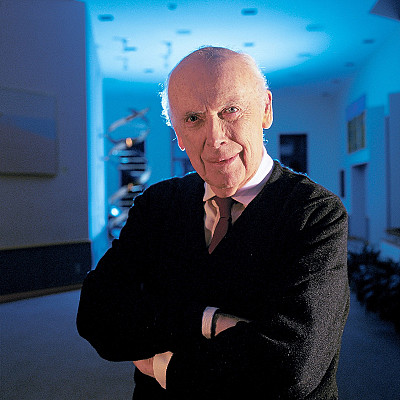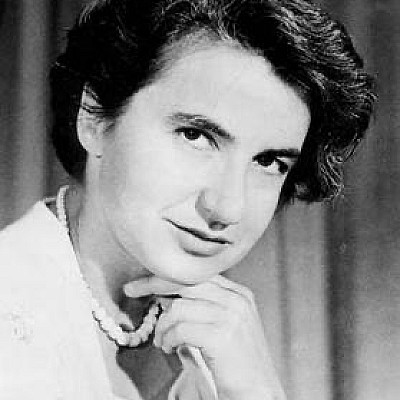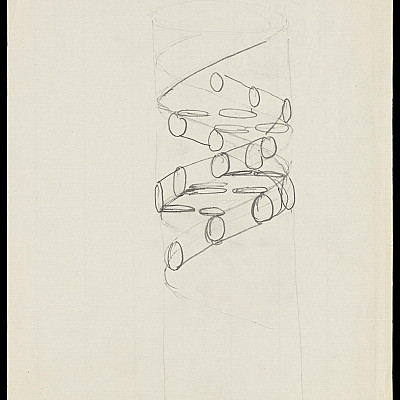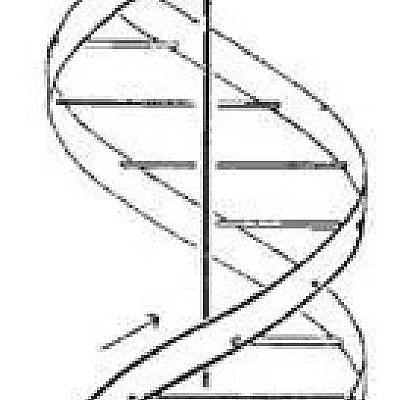
This year marks 70 years since the discovery of the structure of DNA
Deoxyribonucleic acid (DNA) is the basic building block of life on our planet and the carrier of the hereditary characteristics of all living organisms. There is no doubt that the discovery of its double-helix structure by Francis Crick and James Watson 70 years ago, presented in April 1953, was one of the greatest scientific breakthroughs of the 20th century, transforming many other fields and leading to other important discoveries and projects, such as the mapping of the entire human genome, which was completed in 2022. Let us recall the path that led to the discovery of the structure of DNA.
DNA (deoxyribonucleic acid) was discovered in the 1880s by the Swiss physician J.F. Miescher, who analysed pus-soaked bandages. For a long time, DNA was not studied because it was not possible to prepare sufficiently pure samples. At the end of the first half of the 20th century, scientists Rosalind Franklin and Maurice Wilkins were the first to try to unravel the structure of DNA. They used the experimental method of X-ray diffraction analysis (= X-ray crystallography)*, which eventually proved to be the key. Franklin was able to measure the so-called diffraction pattern of DNA and produce X-ray diffraction images (diffractograms). It was not until her 51st attempt that she was successful, because it was very difficult to analyse and prepare pure DNA and because it did not crystallise well. This image was also the first clear photograph in which the detailed form of a cell could be seen.
The closest to constructing a model of DNA was the quantum chemist and biochemist Linus Pauling, who constructed a three-helix model, but because he did not rely on the important diffractograms of Franklin, his conclusions were wrong. The discovery of the structure of DNA was made and rightly credited to two Cambridge-based scientists, namely the American microbiologist James Watson and the British molecular biologist Francis Crick. They first constructed a DNA model on 28 March 1953 and presented their findings in April 1953 in Nature in the article "MOLECULAR STRUCTURE OF NUCLED ACIDS - A Structure for Deoxyribose Nucleic Acid". As already mentioned, Franklin's conclusions were crucial to the final knowledge of the actual structure. According to some experts, she was the one who had the most to do with the discovery, because she was the first to discover that DNA had a helical structure using X-ray crystallography. Watson and Crick then discovered that the structure of DNA is a right-handed double helix, with the bases of the two chains joining together in pairs by hydrogen bridges, always with only adenine (A) and thymine (T) in two bridges and guanine (G) and cytosine (C), also in two bridges. F. Crick later published two further seminal papers in 1954 and 1957, "The Structure of hereditary material" and "Nucleic Acids", in which he further refined the results published in the first paper with J. Watson in 1953.
As the discoverers themselves report, only 2 hours were crucial for the final discovery. "I changed the layout and then we found the base pairing and Francis immediately said that the chains run in absolute directions. And we knew we were right. And it was beautiful, you know, it all happened in two hours," recalled American James Watson of the discovery of the structure of DNA. "We knew it was amazing because you just put an A next to a T and a G next to a C and you have a coping mechanism. So we saw how genetic information is transferred. It's the four-base rule. And, you know, even if it didn't work that way, you could trust it because you didn't have any other scheme."
In 1962, F. Crick, J. Watson and M. Wilkins received the Nobel Prize in Physiology or Medicine for their discovery.
